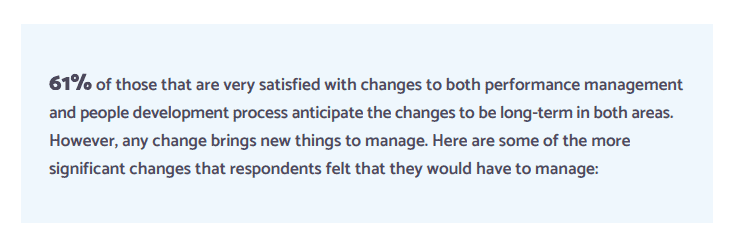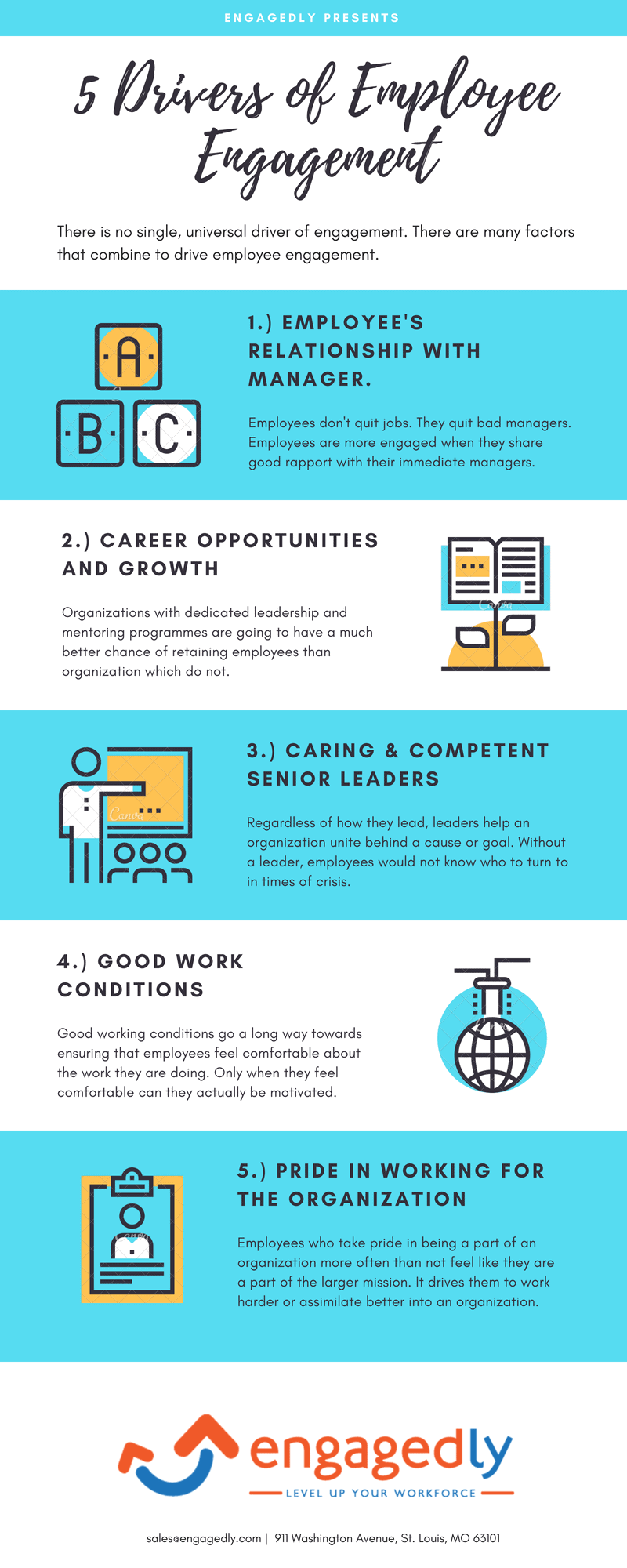To be able to drive and sustain prolific motivation in employees is a classy act of exemplary business leadership. Organizations dwell and prosper when leaders identify opportunities and rise to the occasion. In the ultimate sense, the virtues of employee motivation, employee engagement, and retention within your organization correlate to your efficacy as a leader. Having said that, your success in business leadership is paramount to the advancement of your organization.
What do you think makes some leaders extraordinary? What are the traits that make leaders stand out from the crowd? One thing is true for sure a lot of business leaders have not been as effective as they would have wanted to be in terms of driving employee motivation. Had every business leader been successful, employee engagement levels would not be this dismal. To substantiate, as per Gallup’s 2021 survey, only 20 percent of employees are actively engaged in work.
Also Read: Tips To Manage Stress Of Your Remote Team
Clearly, the difference between organizations with high engagement and those with low levels of it is the difference in the quality of leadership. Charismatic leaders come with a wide spectrum of strong traits that others look up to. When such people are at the helm of things, everyone around them grows, and in the ultimate sense, organizations accomplish their strategic goals. John Maxwell once rightly quoted, “leadership is not about titles, positions or flowcharts. It is about one life influencing the other.”
This blog highlights the most quintessential personality traits that business leaders need to incorporate into their personalities for catapulting positive changes in the workplace. With these traits, they can cultivate overwhelming levels of motivation, enthusiasm, and engagement in employees. In simpler terms, the traits mentioned in the subsequent section will have a massive role to play in the pursuit of business success. So, let us get started without further ado.
1. Clarity of vision and purpose
Being a leader, you are the captain of the ship. If you are unclear about things and the direction in which you should steer the ship, how do you expect your team to portray high motivation? You should be a handsome leader driven by clarity of vision and purpose at all times. Your vision as a leader will be crucial to your motivation. Further, your motivation will be setting the standard for your employees.
To drive your organization to success, you have to be a decisive leader with the traits of critical thinking. When you work with a clear vision in your mind, employees are impressed and feel greater motivation. On the other hand, if you are going to make regrettable decisions as a leader, the morale of the entire workforce will begin to dip.
You also need to recognize the fact that with the rising competitiveness in the business world, there is also an urgency around decision-making. To give your business a competitive advantage, you ought to make quality decisions in real-time. This will also influence the motivation and learning of your employees.
Having said that, it is critical to be clear about your plans, objectives, and key result areas. When you show such effective traits, things flow smoothly in the workplace, and morals scale new heights. As per McKinsey, not more than 20 percent of employees are of the view that their organizations are excellent at decision-making. For sure, business leaders need to exhibit greater credibility and clarity in their decision-making process.
Also Read: 4 Ways To Prevent Rater Bias In Performance Reviews
2. The knack for leading by example
If you look at the most successful leaders across the world, there is one thing common among all of them. From Elon Musk to Jeff Bezos, all of them go beyond their limits to lead their teams by example. On similar lines, you have to lead from the front when it comes to keeping your employees zealous and motivated. You have to model the fundamentals of hard work, persistence, and determination for them. Besides, you have to lead by example to show your employees how they can overcome even the most befitting challenges with motivation.
When they see you staying motivated even in the middle of adversities and exhibiting great self-belief, they will have a lot to learn. Optimism is contagious after all and you have to show your employees how one can remain calm and optimistic in the face of challenges. Expecting your employees to be determined at all times when your commitment does not set the benchmark may be unfair.
Furthermore, as a leader, you ought to display fine qualities of resilience and agility. You have to set high standards for motivation and performance for everyone. Your employees must know that they have to meet these standards, irrespective of the situation. The gist of the matter is that your employees will always look up to you and you ought to keep evolving new tactics to inspire them. The gist of the matter is that you have to be the prodigal leader they should be able to idolize.
3. Proficiency in communication
In every domain, it is imperative for leaders to be great communicators. When you have the spark to communicate goals, purpose, and instructions in an effective manner, employees have a clear sense of direction. Further, when responsibilities and key performance indicators are communicated effectively, it sparks greater motivation among employees.
Needless to say, employees’ motivation will be the highest when they are sure of what is expected of them. This is where the communication skills of leaders and managers are vital. As per SalesForce, 86 percent of employees are of the view that projects fail in the workplace because of ineffective communication. In fact, many organizations lack a structured and strategy for workplace communication.
To add, as per Expert Market, 97 percent of employees opine that workplace communication impacts their everyday performance and motivation. Having said that, communication being the key is no overstatement. There have to be effective communication strategies in place that will be subject to your ability as a communicator.
Moving further, a leader’s communication skills are also pivotal to feedback sharing. As a leader, you have to be streak smart in the way you share feedback with your employees. The feedback sharing has to be constructive, regular, and concise. At the same time, your communication skills should be such that even negative feedback shouldn’t be intimidating to your employees.
To augment, even the frequency of feedback sharing is imperative from the purview of communication. As per HubSpot, 65 percent of employees assert that they seek more frequent feedback from their leaders. Besides, 98 percent of employees begin to disengage when they receive no feedback. Given that, you now know the importance of feedback in the workplace and how critical your communication skills are for the same.
Also Read: 10 Ways To Improve Communication At Workplace
4. Compassion
The ones who assert that the corporate world is no place for emotions have got it all wrong. Being a compassionate leader comes with promising returns on investment that you ought to acknowledge. But what does compassion in the workplace imply in a positive sense?
Being a compassionate leader means that you ought to have empathy and emotional intelligence to understand your employees’ emotions. In fact, besides understanding their feelings, it is also important to respect what they feel and offer them support. Such compassion will find great appreciation among your employees and they will be able to manage their emotional vulnerabilities better.
Needless to say, the better your employees deal with their negative emotions, the greater will be their motivation and productivity. What compassionate leaders are great at is inspiring a sense of emotional security in people around them and steering their emotions in a positive direction. This is what EQ is all about, and there is every reason why business leaders need to work on developing EQ skills.
Probing further, let us underline the importance of empathy in the workplace with some credible statistics. As per the State of Workplace Empathy Report, 90 percent of employees assert that workplace empathy is quintessential. Employees want their employers and leaders to be able to understand their emotional states and support them in a worthwhile manner. As a leader, you can only deliver on this expectation when you have bright traits of empathy and compassion.
Also Read: Employee Engagement Tips To Avoid Burnout
To add, being a compassionate leader also implies that you ought to express gratitude to your employees. Business leaders ought to express thankfulness towards their employees for the effort, consistency, and commitment they invest. To substantiate, as per workplace gratitude statistics, 88 percent of employees assert that they will work with greater motivation for a grateful business leader. Having said that, remember to be grateful to your valued employees!
In fact, ever since the outbreak of the COVID-19 pandemic and how it affected everyone’s mental health, the scenario has changed. The need for compassion in the workplace is higher than ever before. Otherwise, when employees do not find emotional support from their leaders, their motivation and performance will begin to dip. In a workplace that lacks compassion, employees will be prone to high burnout rates. This may further impact the rates of employee engagement and retention.
Moreover, you also need to consider the fact in remote working environments, employees are vulnerable to emotional disconnect. The feeling of isolation in remote workers can be demotivating. To have their motivation aligned with company goals, you need to go out of your way to offer compassionate support to your remote employees.
5. The ability to delegate
Are you comfortable delegating authority and responsibilities to your subordinates? Is delegation even a strategy that you look forward to applying in the workplace in a worthwhile way? One incredible trait of successful business leaders is that they do not keep all the authority centralized in their hands. They are happy to share both power and responsibilities with their employees with the aim of leveraging the merits of delegation in business. Do you know what these fascinating merits of delegation in business are?
When you develop the ability to delegate, you will be able to foster optimized workplace relationships. Your employees will be able to derive great value from the fact that you trust them with more authority and responsibilities than they are entitled to in the usual sense. Besides, the acts of delegating will give hands-on exposure and training to your employees on new dimensions of professionalism.
Here, it is also imperative to acknowledge that superiors’ trust and learning opportunities are among the most basic employee expectations for motivation. To augment, as cited by the LinkedIn Learning Report, 94 percent of employees are of the view that they will be motivated to stay at a company for longer if their leaders invest in their learning and development. Given that, while training modules may have their own benefits, delegating tasks facilitates learning experiences, offering higher motivation.
Moving forward, let us also analyze the impact of trust you show in your employees when you undertake delegation. As per Harvard Business Review, employees exhibit 76 percent higher engagement and 106 percent greater energy when their superiors trust them. Moreover, in high trust working environments, employees prove to be 50 percent more productive.
Also Read: The Essential Guide To Employee Productivity In A Hybrid Setup
Can you now realize the incredible charm of delegation as a business strategy? At times, delegation is the simplest answer to keeping your employees motivated and productive to the core. Of course, this business strategy proves to be successful when you are meticulous in your delegating decisions.
Hence, you have to be more comfortable with the idea of delegation to get the most out of your team members. In fact, delegating some surplus responsibilities to them will also give you some more time to focus on vital things or to get more rest in order to prevent burnout. Even you deserve some time off from the grim hustle and bustle!
6. Selflessness in appreciation
Sharing credit is not a quality or ability that everyone possesses. However, the ability to appreciate or share credit with others is a trait you should definitely work on if you do not have it yet. This is for the simple reason that you cannot expect your employees to be highly motivated or engaged in the absence of recognition.
Having said that, you ought to be a selfless leader when it comes to appreciating and recognizing your employees. Although you have to lead from the front in most instances, you need to put your team members first when it comes to celebrating success. Your selfishness as a leader will be sacrosanct in steering brimming motivation among your employees.
In fact, when it comes to appreciation, every ounce of it counts! We all love being appreciated for the good things we do. Moreover, this sense of appreciation does, by default, instill a new zest of motivation among us. In a similar way, appreciation and recognition work wonders to help employees realize replenished levels of motivation and engagement.
To substantiate, as per HR Technologist, lack of appreciation is the primary reason why 44 percent of employees tend to quit. Needless to say, it is not the motivated employees who tender their resignations. The more selfless and warmhearted you can be in sharing success and appreciating your people, the greater will be your levels of motivation. Besides, you also ought to be innovative in the ways you extend recognition to your employees.
7. Integrity
It is quintessential for leaders to uphold their integrity at all times, especially in the midst of unprecedented situations. Leaders have to be honest with themselves as well as others around them. Moreover, leaders should maintain a moral high ground at all times and endorse the right way of doing things rather than the easier way of doing them. In testing waters, integrity is the first thing that people tend to compromise. However, as a business leader, you have to embrace it and model it for others under all kinds of circumstances.
The analogy behind integrity being crucial for employee motivation is simple. Employees feel motivated and the urge to take additional responsibilities when they amply respect their leaders. Moreover, employees commit greater diligence when they see their organization upholding strong belief in some salient core values. Integrity for sure is one of the most fundamental principles among these values.
Also Read: Why Are Organizational Values Important
The bottom line is that you need to model for your employees how work ethics contribute to success. You have to make them believe that nothing is insurmountable unless they hold on to their integrity. This trait of yours will have an incredible impact on the personality of your employees.
Want to know how Engagedly can help your leaders drive engagement? Request for a live demo.
Author:
Jessica Robinson is a charismatic corporate leader, a selfless educator, and a versatile content creator. Despite a management degree, her vision behind blogging is not only to follow her passion but to create more informed societies. Her selflessness reflects in every piece of her work on The Speaking Polymath.















![What Drives Employee Engagement? [Infographic]](https://engagedly.com/wp-content/uploads/2018/07/Drivers-of-Engagement_Infographic_Header.png)











